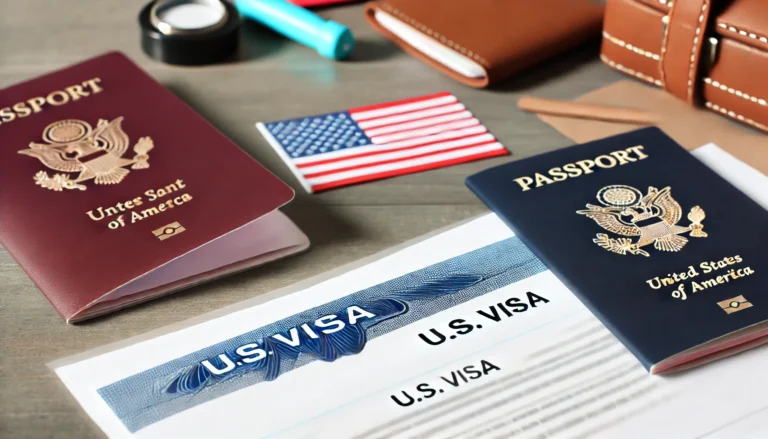Understanding Special Visas
Introduction
Understanding Special Visas : Special visas provide unique opportunities for foreign nationals to enter the United States based on specific circumstances. Two notable categories are the EB-5 Immigrant Investor Visa, designed for investors, and the K-1 Fiancé(e) Visa, aimed at individuals engaged to U.S. citizens. This guide explores the eligibility requirements, application processes, and important details regarding these special visas.
Special Visas: EB-5 Immigrant Investor Visa and K-1
EB-5 Immigrant Investor Visa
What Is the EB-5 Visa?
The EB-5 Immigrant Investor Visa allows foreign nationals to obtain a Green Card by investing in a U.S. business that creates jobs. The EB-5 program aims to stimulate the economy through capital investment and job creation.
Eligibility Requirements
To qualify for the EB-5 visa, you must meet the following criteria:
- Investment Amount: Invest at least $1.05 million in a new commercial enterprise or $800,000 if the investment is made in a Targeted Employment Area (TEA) that is rural or has high unemployment.
- Job Creation: Your investment must create or preserve at least ten full-time jobs for U.S. workers within two years of the investment.
- New Commercial Enterprise: The business must be a for-profit entity established after November 29, 1990, or a troubled business that has been in operation for at least two years.
Application Process
- Choose an Investment Option: Decide whether to invest directly in a business or through a Regional Center, which is designated by USCIS to promote economic growth.
- Prepare Required Documentation: Gather evidence of your investment and the business’s job creation potential.
- File Form I-526: Submit Form I-526 (Immigrant Petition by Alien Investor) along with supporting documents to USCIS.
- Await Approval: If approved, your petition will be forwarded to the National Visa Center (NVC).
- Apply for Visa or Adjust Status: If outside the U.S., apply for an immigrant visa at a U.S. Embassy or Consulate. If already in the U.S., file Form I-485 (Application to Register Permanent Residence or Adjust Status).
Duration of Stay
Once granted, the EB-5 visa provides conditional permanent residency for two years. To remove conditions, you must file Form I-829 (Petition by Entrepreneur to Remove Conditions) within the 90-day period before the two-year anniversary of your Green Card.
K-1 Fiancé(e) Visa
What Is the K-1 Visa?
The K-1 Fiancé(e) Visa allows foreign nationals engaged to U.S. citizens to enter the United States for the purpose of marriage. After marrying within 90 days of arrival, the K-1 visa holder can apply for a Green Card.
Eligibility Requirements
To qualify for the K-1 visa, you must meet the following criteria:
- Engagement to a U.S. Citizen: You must be engaged to a U.S. citizen who will act as your sponsor.
- Intention to Marry: You and your U.S. citizen fiancé(e) must intend to marry within 90 days of your arrival in the U.S.
- Previous Relationship: You must have met your fiancé(e) in person at least once within the two years before filing the petition, unless meeting would cause extreme hardship.
Application Process
- File Form I-129F: The U.S. citizen fiancé(e) must file Form I-129F (Petition for Alien Fiancé(e)) with USCIS.
- Await Approval: If approved, the petition is forwarded to the NVC and then to the appropriate U.S. Embassy or Consulate.
- Complete Visa Application: The foreign fiancé(e) must complete Form DS-160 (Online Nonimmigrant Visa Application) and attend a visa interview.
- Medical Examination: Complete a medical examination by an authorized physician.
- Receive K-1 Visa: If approved, the K-1 visa will be issued, allowing entry into the U.S.
Duration of Stay
The K-1 visa is valid for 90 days from the date of entry into the United States. After marrying within this period, the K-1 visa holder can apply for a Green Card by filing Form I-485.
Important Tips for Special Visa Applicants
- Consult an Immigration Attorney: Given the complexity of immigration law, consider seeking professional advice to navigate the application processes.
- Be Prepared with Documentation: Gather all required documents, including financial statements for the EB-5 visa and proof of engagement for the K-1 visa.
- Timely Applications: Submit your applications and supporting documents promptly to avoid delays.
- Maintain Open Communication: Stay in touch with your sponsor (for K-1) or your investment business (for EB-5) to ensure all requirements are met.
Conclusion
The EB-5 Immigrant Investor Visa and K-1 Fiancé(e) Visa offer unique pathways for foreign nationals to enter and reside in the United States. Understanding the eligibility requirements, application processes, and essential tips can help you navigate these special visa categories effectively.
For more information on special visas, visit the U.S. Citizenship and Immigration Services (USCIS) website and K-1 visas.

